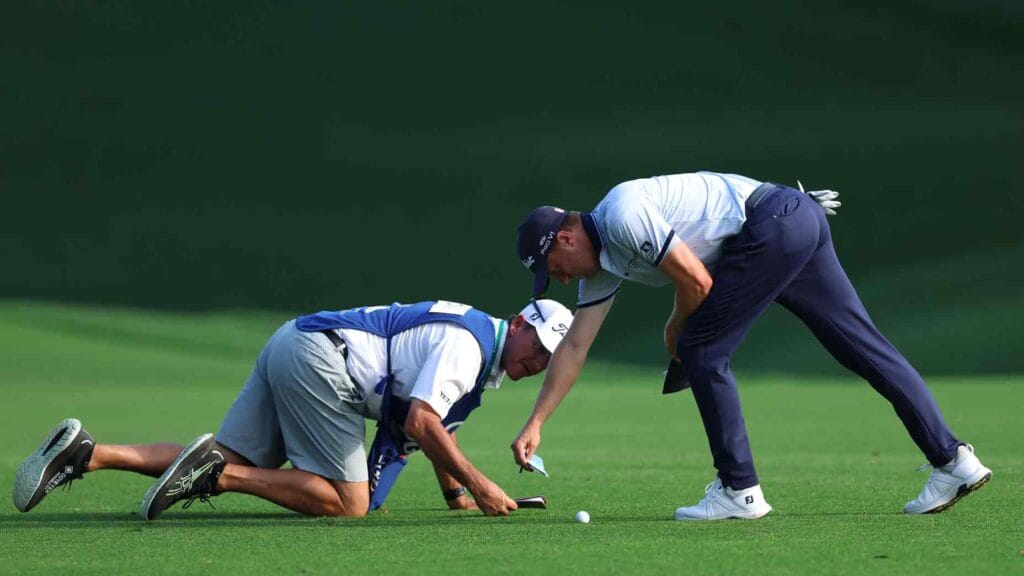Understanding Mud Balls: A Challenging Phenomenon at the 2025 PGA Championship
The Rise of Mud Balls at Quail Hollow
During the 2025 PGA Championship held at the renowned Quail Hollow Country Club, a significant and often frustrating aspect of the game emerged: mud balls. This term refers to a common occurrence in golf where damp course conditions cause mud to stick to golf balls, adversely affecting their trajectory and performance. As the best players in the world teed off, discussions surrounding this issue dominated commentary and player conversations alike.
Players Voice Frustration
Top competitors, including renowned names like Xander Schauffele and Scottie Scheffler, openly expressed their displeasure with the effect mud balls had on their game. Particularly during the early rounds, players noted that these conditions provided what they considered unfair breaks, significantly impacting their scoring potential. Scheffler articulated his concerns following his round, citing a double bogey that he attributed directly to a mud ball. This raised a critical discussion about the fairness of the course conditions and the rules of play.
A Call for Preferred Lies
The insistence on playing balls as they lie sparked a debate within the golf community. Welcoming the idea of “preferred lies,” which would permit players to clean and reposition their balls, Scheffler argued for a fairer test of golf under challenging circumstances. He highlighted the frustration of training tirelessly to control a golf ball, only to encounter a random obstacle that could derail their efforts on such a significant stage.
Mud Balls Impact Performance
Schauffele and others found themselves similarly hindered on the infamous 16th hole. Compounding this challenge, the PGA of America had previously decided against implementing preferred lies, stating that grass conditions were "outstanding" and "drying by the hour." However, as the tournament progressed, it became evident that muddy conditions were far more problematic than anticipated, sparking frustration among players and commentators alike.
The Voice of Experience
Commentators such as Curtis Strange and Scott Van Pelt shed light on the history of golf courses and the unique challenges posed by extreme wetness. Drawing on experiences from other tournaments, they argued that even experienced golfers like Padraig Harrington acknowledged the substantial difficulty mud balls introduce when trying to navigate the course.
Analyzing Course Conditions
As the opening day unfolded and conditions showed little sign of improvement, discussions intensified about the decision to play without allowing players to clean their balls. While the PGA aimed for a fair tournament experience, many players felt let down by a ruling that ultimately compromised their chances. Van Pelt emphasized the need to ensure players aren’t unjustly punished for hitting fairway shots that become mangled due to mud.
Evaluating Course Management
Analysts like Strange suggested that the PGA of America misjudged the conditions at Quail Hollow, noting that the quality of the grass alone would not necessarily mitigate the effects of mud. As players continued to face difficulties, the dialogue surrounding the course management decisions gained urgency, prompting calls for a shift in treatment.
Bridging Perspectives: Tradition vs. Modern Conditions
At the heart of the matter lies a fundamental question about tradition in golf. Should players be penalized for unfavorable conditions caused by factors beyond their control? Many believe this scenario challenges the very essence of the sport, where skill should take precedence over luck. As the tournament neared its conclusion, these sentiments only deepened.
The Road Ahead
Looking toward the remaining rounds, players like Schauffele predicted worsening conditions regarding mud balls as the play continued. As the competition intensified, so too did the conversation around course management and fairness. These factors could practically determine the championship outcome, raising stakes high for both competitors and organizers.
Conclusion: A Call for Reflection
The events at the 2025 PGA Championship provide a critical lens through which to evaluate the balance between tradition and player experience. As golf continues to evolve, organizers and players alike must engage in meaningful discussions to ensure fairness while preserving the sport’s integrity. Thus, the conversation surrounding mud balls at Quail Hollow is not just about a single tournament; it’s about shaping the future of golf and addressing the needs of players in an ever-changing landscape.


